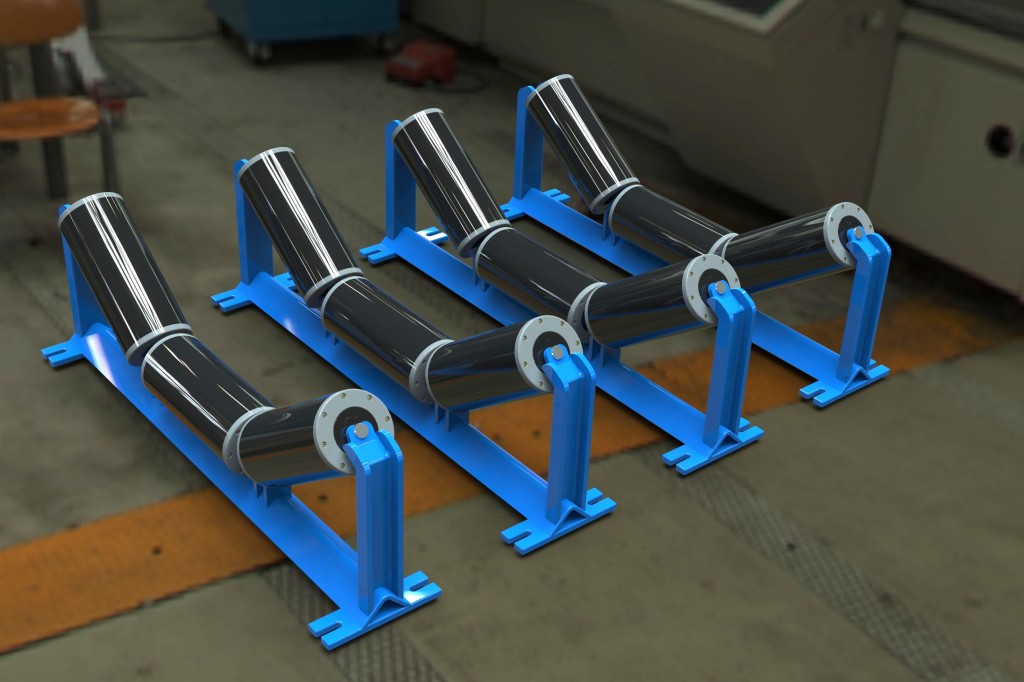Conveyor rollers try to make minimal work of moving pieces around with minimum energy being applied, and thanks to the engine powered options, they ensure significantly less manpower as well. From wheels, belts and integral rollers there are a broad range of rollers found on the modern marketplace, regardless of whether you look for a continuous-duty motor or manually powered device.
Rollers are generally useful to move bulk products, and there are many different kinds of rollers for particular roles. Rollers and other conveyors will be able to lift up material, use vibratory movement to relocate materials, and hang from above. Some other major types include screw conveyors, chute conveyors and tow conveyors.
Let’s take a closer look at some of the main types of conveyor.
Conveyor Rollers
These are handling solutions make use of rollers mounted in frames to manoeuvre products. The factors you have to think about include the weight potential and circumference, combined with conveyor width and length. Roller conveyors are typically present in handling spaces which include loading docks, baggage handling or assembly lines. Rollers use gravity or manual power to transport goods around and can be straight or curved depending on location or working environment.
Powered roller conveyors use driven rollers secured with frames to move goods and materials about. The top consideration is the kind of drive that you need. The principal drive varieties include belts, chains and motors. Powered roller conveyors have lots of uses, which include food handling, packaging and many other construction line industrial sectors.
Wheel conveyors use unpowered wheels to move commodities, either by gravitational forces or manual power. If deciding on a wheel system, you need to think about load capability, the actual physical lengths and widths and the electric power requirements. Wheel conveyors are generally useful for loading and unloading trucks, in addition to relocating big hefty objects such as pallets. Depending on weight requirements, wheel numbers and spacing can vary.
This web site www.conveyorrollers.co.uk offers quite a bit more info on the subject of Conveyor Roller.
Vibrating conveyors use rotary or linear vibration to safely move product or components along. They may be commonly used to move bulk materials like gravel and coal. Depending on the required use, many sizes are available.
Overhead conveyors are installed to ceilings and make use of trolleys moved by chains, cabling or other connections. They are most frequently utilised in business sectors where the product has to be suspended, including parts handling systems, or for a/c needs. Depending upon the expected use of the overhead platform, the load transporting potential may be very important. Most systems are motorised though you can find the ones are hand powered.
Belt conveyors use continuous belts to safely move merchandise. These are generally regularly employed in food solutions, for baggage handling, in packaging and in the postal service, even when you would most often relate them with the cash registers in grocery chains. Belt conveyors usually are motorised and function at a number of rates of speed. Belts can be driven flat or perhaps at inclines.
Beltless magnetic conveyors use moving magnets under stationery plates to transfer magnetic or ferrous content. This may be comprising of scrap metal or equipment parts. Beltless magnetic conveyors can be horizontal, up-right or a mix of each.
The Uses Of Roller Conveyors
Your personal choice of conveyor system depends on the product style, velocity, distance off the ground and segment focus unique to your business. Numerous sorts of conveyor, including belts and vibrating units, can be used over long distances in markets such as mining and raw materials. On the other hand, a vibrating belt system can be of little use in food production or technology sectors.
Conveyors may perhaps be manually powered, which is when products are moved along manually over the rollers or wheels. Others are air powered or engine powered. Generally, however, they are driven by electric power engines. This either takes place directly or through reduction gears, chains and sprockets.
Materials and units are generally moved on the top surfaces of conveyors, although overhead conveyors would be the noticeable exception.
Choosing A Roller
If you’re planning to transfer things without difficulty coupled with the smallest amount of effort and hard work and the highest level of safety, you must appraise your needs and requirements really carefully. Your eventual choice will be determined by the industry sector in which you operate, a choice of power supply (or not) as well as financial budget which you have.
Conveyor rollers are perhaps the simplest and flexible system and also one of the most affordable. Roller systems are also user friendly and maintain and can be customised to a wide array of industrial sectors and uses. Components can be custom-designed to for your available space and rollers can be selected by materials, weight capacity, speed capacity and more. This is why conveyor rollers are one of the most widely used options for UK establishments.
Roller conveyor systems can be custom-designed from modular components. These include straight sections, curves, transitions, merges, partitioning plus much more. Makers will give design practical knowledge and installing the components assistance, allowing you to get the most effective device for your requirement. They may also include on-going routine service assistance and spares to help keep your articles and your business moving.
If it’s time you expanded your company and you need to reduces costs of manufacturing, storage, delivery or more, then a conveyor roller system may perhaps be exactly what you’ve been searching for.
